
There’s something magical about hitting the trail when the crowds have gone home and the landscape feels like it’s all yours. The air is crisper, the light softer, and the silence—somehow louder.
Hotels are cheaper, wildlife steps closer, and the trails reveal a quieter kind of drama you just don’t get in peak season. Shoulder-season hiking isn’t about dodging tourists—it’s about finding that rare, golden window where nature shows off without needing a spotlight.
If you’ve ever craved wild beauty without the chaos, this is your moment. And these hikes? They’re the kind worth planning your year around.
1. The Narrows – Zion National Park (Fall)

There’s something otherworldly about walking in a river between thousand-foot canyon walls—and that’s exactly what you do on The Narrows, one of Zion’s most iconic hikes. But here’s the secret: Fall is when this hike truly shines. Summer can be oppressively hot and dangerously crowded, while spring runoff can close the trail. But in September through early November, the water levels drop, the crowds thin, and golden cottonwoods light up the canyon in spectacular color.
Wading through the Virgin River with cool water lapping at your legs and streaks of sunlight pouring down from the narrow rim above is an experience you don’t forget. You don’t need to do the full 16-mile top-down route; the bottom-up version (no permit required) gives you plenty of magic in just a few miles.
Renting proper gear—neoprene socks, dry pants, and a sturdy walking stick—makes a huge difference. Nearby outfitters offer great off-season discounts, so your adventure doesn’t break the bank.
Need-to-Know:
- Best Months to Visit: Late September through early November
- Trail Length: Up to 16 miles (Top-down) or 3–6 miles (Bottom-up out-and-back)
- Difficulty: Moderate (water wading)
- Permit Required: Only for the top-down version
- Nearby Base: Springdale, Utah – lower hotel rates in the fall
2. Highline Trail – Glacier National Park (Late Summer to Early Fall)
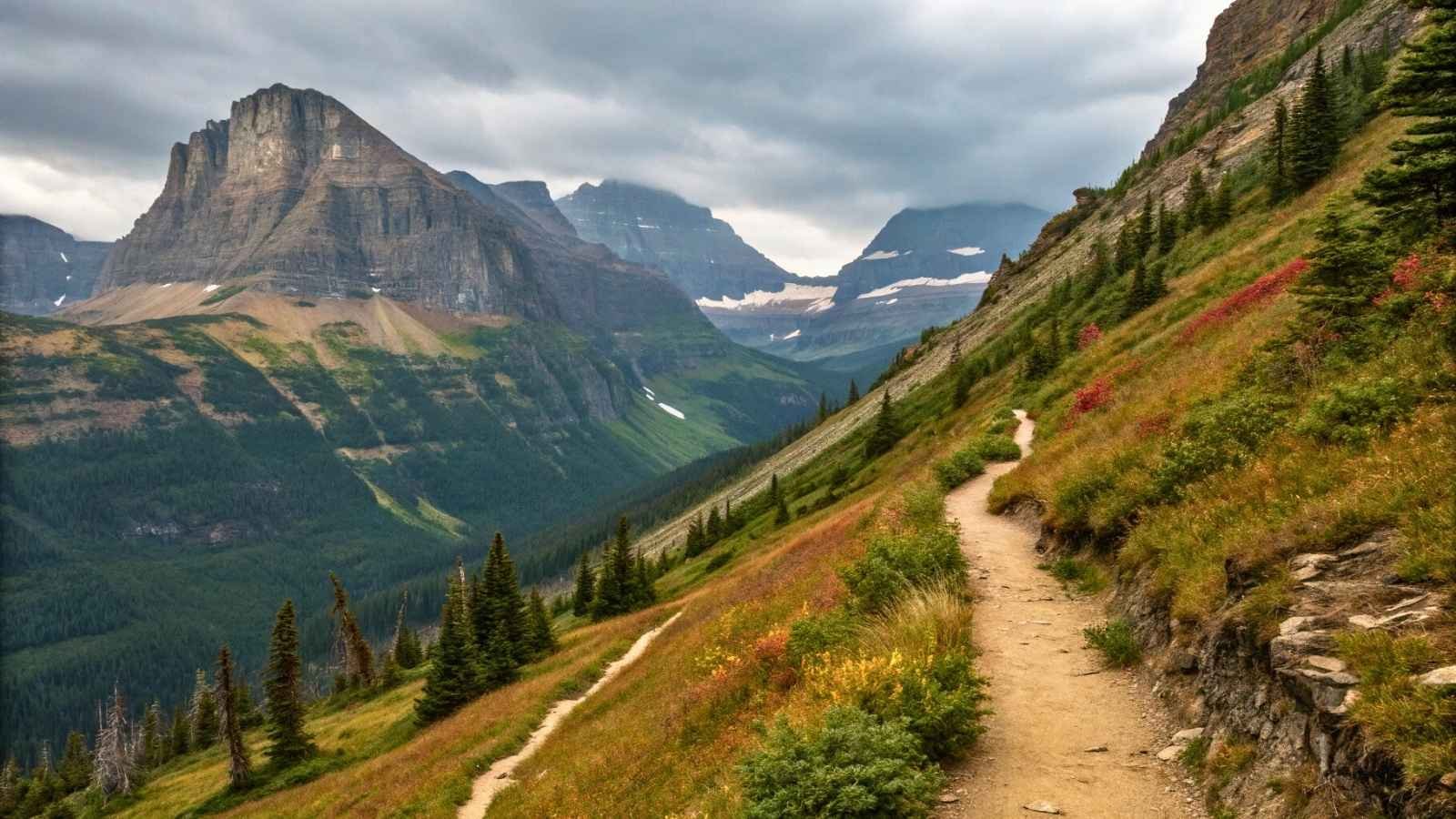
If your idea of the perfect hike involves sweeping alpine views, glacier-carved valleys, and high-elevation wild solitude, then the Highline Trail needs to be on your radar. Starting at Logan Pass, this trail skirts the Garden Wall with jaw-dropping views of the park’s rugged peaks and deep green valleys. And if you’re hiking it in late August or September, you’re in luck: the summer crowds are thinning, but the weather is still glorious.
What makes this trail so captivating isn’t just the vistas—it’s the constant reveal. Every mile brings a new angle, a waterfall, a goat on a cliff edge, or a quiet moment in the sun. And if you’re lucky, you’ll catch the first hints of fall color turning the meadows gold and scarlet.
The full hike to Granite Park Chalet and down the Loop is about 11.8 miles, and many hikers take the shuttle system (which is still operational in early fall) to make it a point-to-point adventure.
Need-to-Know:
- Best Months to Visit: Late August through mid-September
- Trail Length: 11.8 miles (point-to-point)
- Difficulty: Moderate to strenuous
- Permit Required: No
- Nearby Base: West Glacier or Apgar – better lodging rates after Labor Day
3. Angels Landing – Zion National Park (Late Fall)
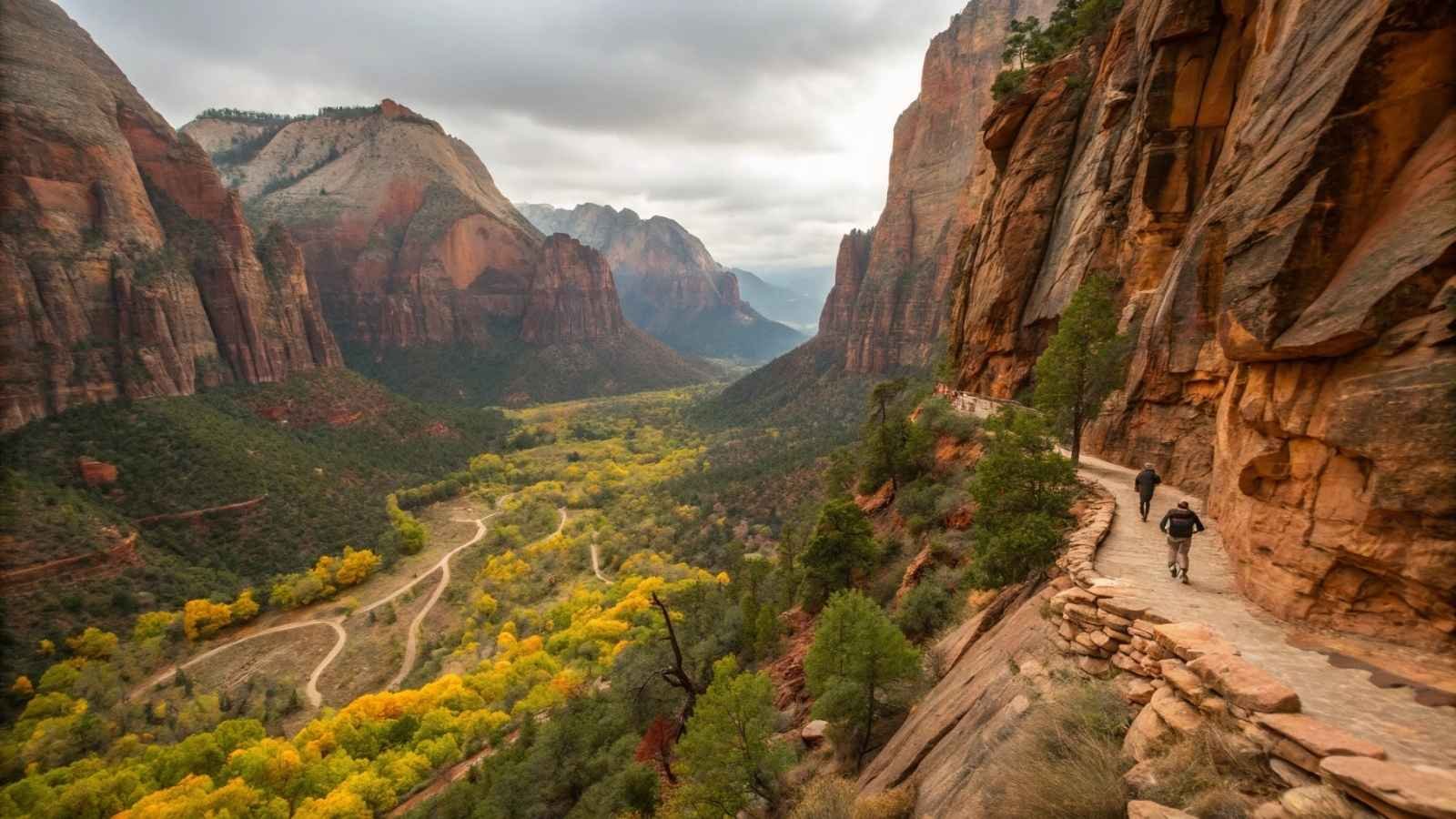
Angels Landing is one of those bucket-list hikes that people fly across the country to conquer—and yes, it’s every bit as dramatic as they say. The final stretch, with its sheer drop-offs and anchored chains, isn’t for the faint of heart. But hiking it in late fall, from mid-November to early December, gives you the experience without the shoulder-to-shoulder hiker traffic.
Zion’s temperatures are cool and crisp by then, and the sun hits those red cliffs just right—burnt orange and deep shadows dancing across the canyon walls. Permits are still required year-round now, but fall permits are easier to snag compared to peak summer.
The hike starts mellow but gets intense fast. Once you’re holding those chains and gazing down into the canyon 1,400 feet below, you realize why they call it Angels Landing—because you feel like you’re somewhere between earth and heaven.
Need-to-Know:
- Best Months to Visit: Mid-November to early December
- Trail Length: 5.4 miles round trip
- Difficulty: Strenuous, with exposed sections
- Permit Required: Yes (apply online lottery system)
- Nearby Base: Springdale, Utah – lower hotel prices and fewer tourists in late fall
4. Mist Trail to Half Dome – Yosemite National Park (Spring)
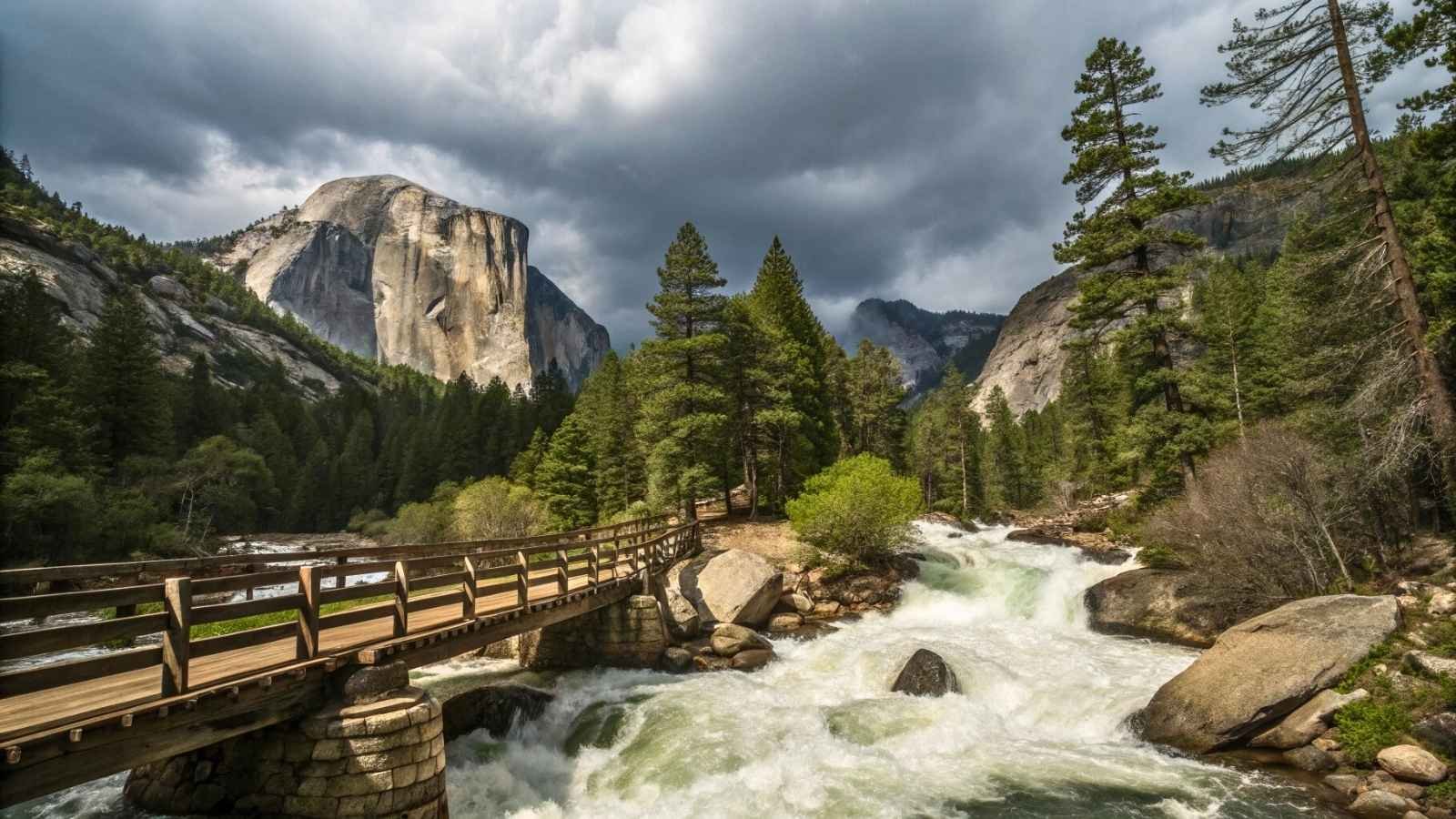
There’s no hike in Yosemite quite as epic—or as varied—as the trail to Half Dome via the Mist Trail. Spring brings back the thunder of Vernal and Nevada Falls, thanks to snowmelt surging down the Merced River. The Mist Trail lives up to its name—you’ll get soaked (in the best way) by plumes of water as you ascend stone staircases that twist along the cliffs.
By late May or early June, the cables on Half Dome are usually up, and the park isn’t yet bursting at the seams. Fewer people on the trail and exploding waterfalls make this the dream window to experience it.
The final cable climb to the summit of Half Dome is not for everyone, but for those who are prepared, it’s one of the most rewarding experiences in the National Park system. Just be sure to train, apply for a permit in advance, and respect the conditions—it’s an achievement, not a casual walk.
Need-to-Know:
- Best Months to Visit: Late May through mid-June
- Trail Length: 14–16 miles round trip
- Difficulty: Strenuous
- Permit Required: Yes (especially for Half Dome cables)
- Nearby Base: Yosemite Valley – more campsite availability in spring
5. South Kaibab to Bright Angel Loop – Grand Canyon National Park (Spring/Fall)
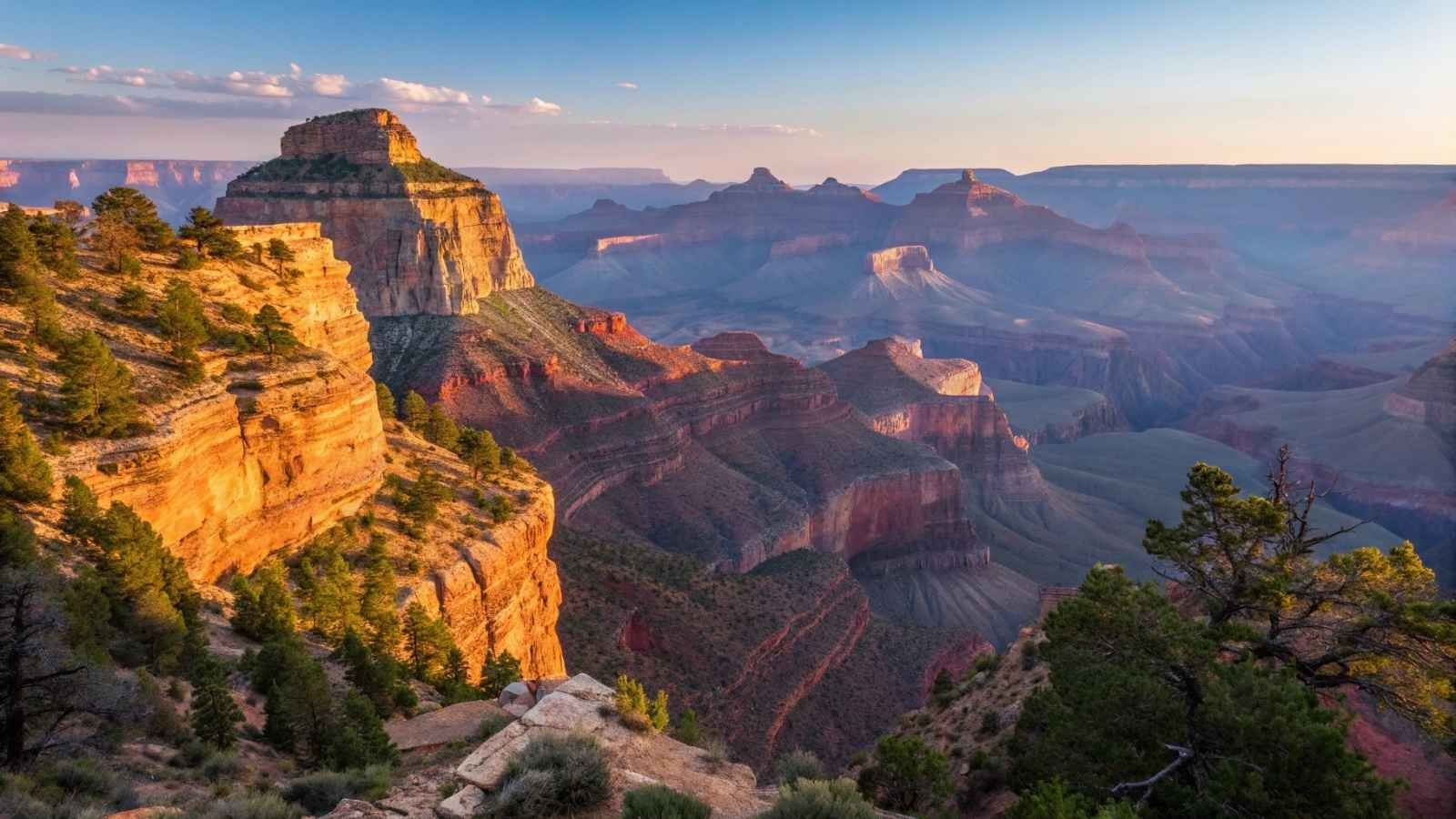
Doing a rim-to-river-to-rim loop is one of the most unforgettable ways to experience the Grand Canyon. The South Kaibab Trail descends steeply with panoramic views from every switchback, while the Bright Angel Trail offers a more gradual return and shady rest stops with water access.
Spring and fall are ideal. Summer heat at the bottom of the canyon can reach 110°F or more, but April–May and September–October bring daytime highs in the 70s and cool nights. Plus, mule traffic is lighter, and lodge rates in the park and nearby Tusayan are more manageable.
Doing the full loop in a day is possible for experienced hikers, but many choose to overnight at Phantom Ranch or Bright Angel Campground. Either way, watching the sun rise or set while standing deep inside the Grand Canyon is the kind of memory that sticks for life.
Need-to-Know:
- Best Months to Visit: April–May, September–October
- Trail Length: 17.1 miles round trip (loop)
- Difficulty: Strenuous
- Permit Required: Yes for overnight stays (Phantom Ranch or campground)
- Nearby Base: Grand Canyon Village – spring and fall have fewer crowds, lower prices
6. Skyline Trail – Mount Rainier National Park (Late Summer to Early Fall)
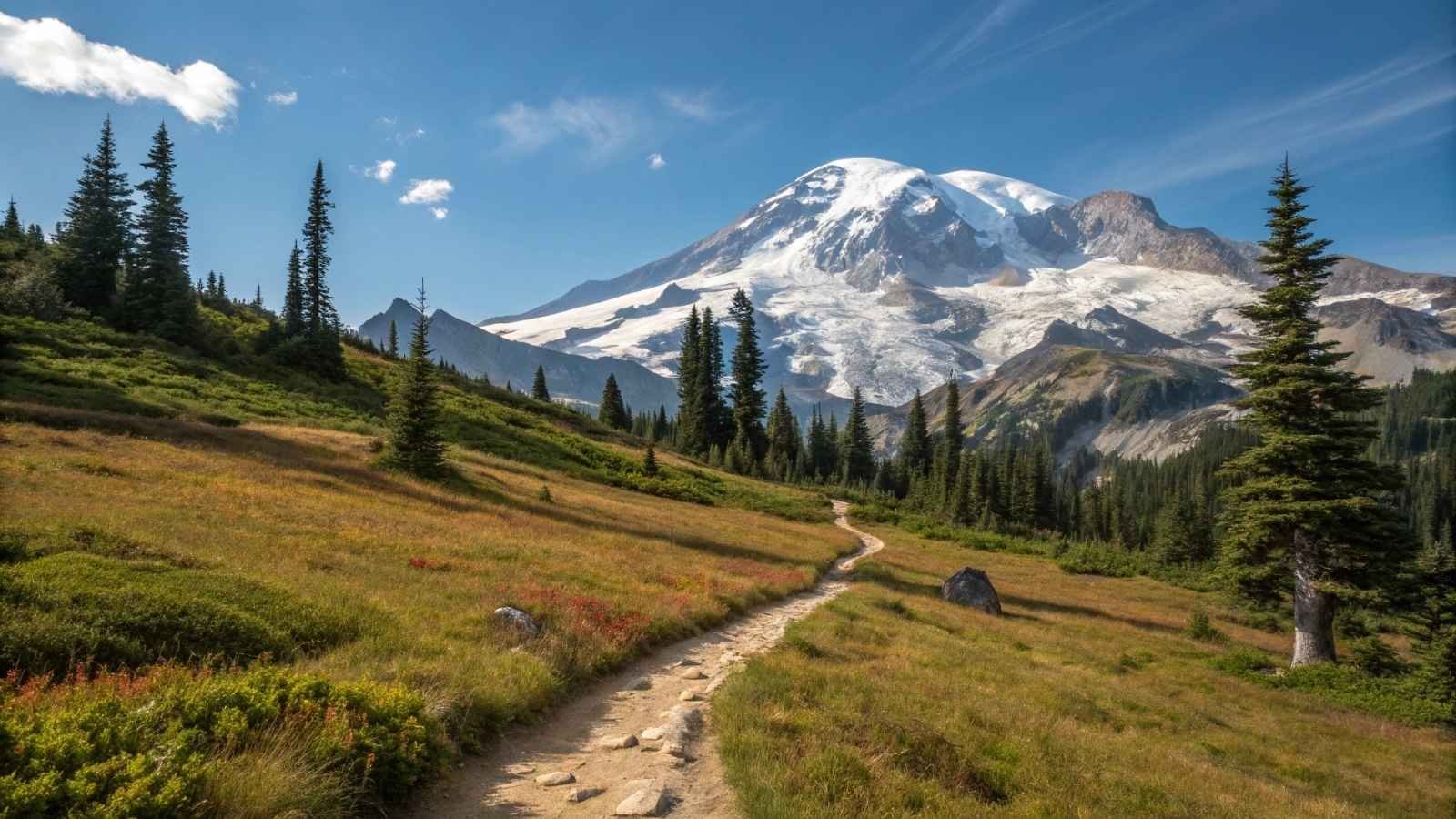
There are few places where you feel as small and stunned as you do on the Skyline Trail, looping high above Paradise in Mount Rainier National Park. What makes this hike a shoulder-season gem is the transition of the landscape—from vibrant wildflower meadows in late August to flaming red and orange foliage by mid-September, all set against the icy, commanding face of Mount Rainier.
It’s not just the scenery that makes this hike special—it’s the feeling of walking toward something sacred. As you ascend the switchbacks, marmots whistle from the rocks, the air cools, and that immense glacier-covered volcano looms ever closer. On clear days, you’ll even spot Mount Adams and Mount St. Helens on the horizon.
Because summer crowds thin out after Labor Day and lodging prices in nearby Ashford and Longmire start to dip, this trail offers that magical combo: soul-stirring views, thinner foot traffic, and peak colors—literally and figuratively.
Need-to-Know:
- Best Months to Visit: Late August through September
- Trail Length: 5.5-mile loop
- Difficulty: Moderate
- Permit Required: No
- Nearby Base: Longmire or Ashford – prices ease in the fall shoulder season
7. Devil’s Garden Loop – Arches National Park (Late Fall)
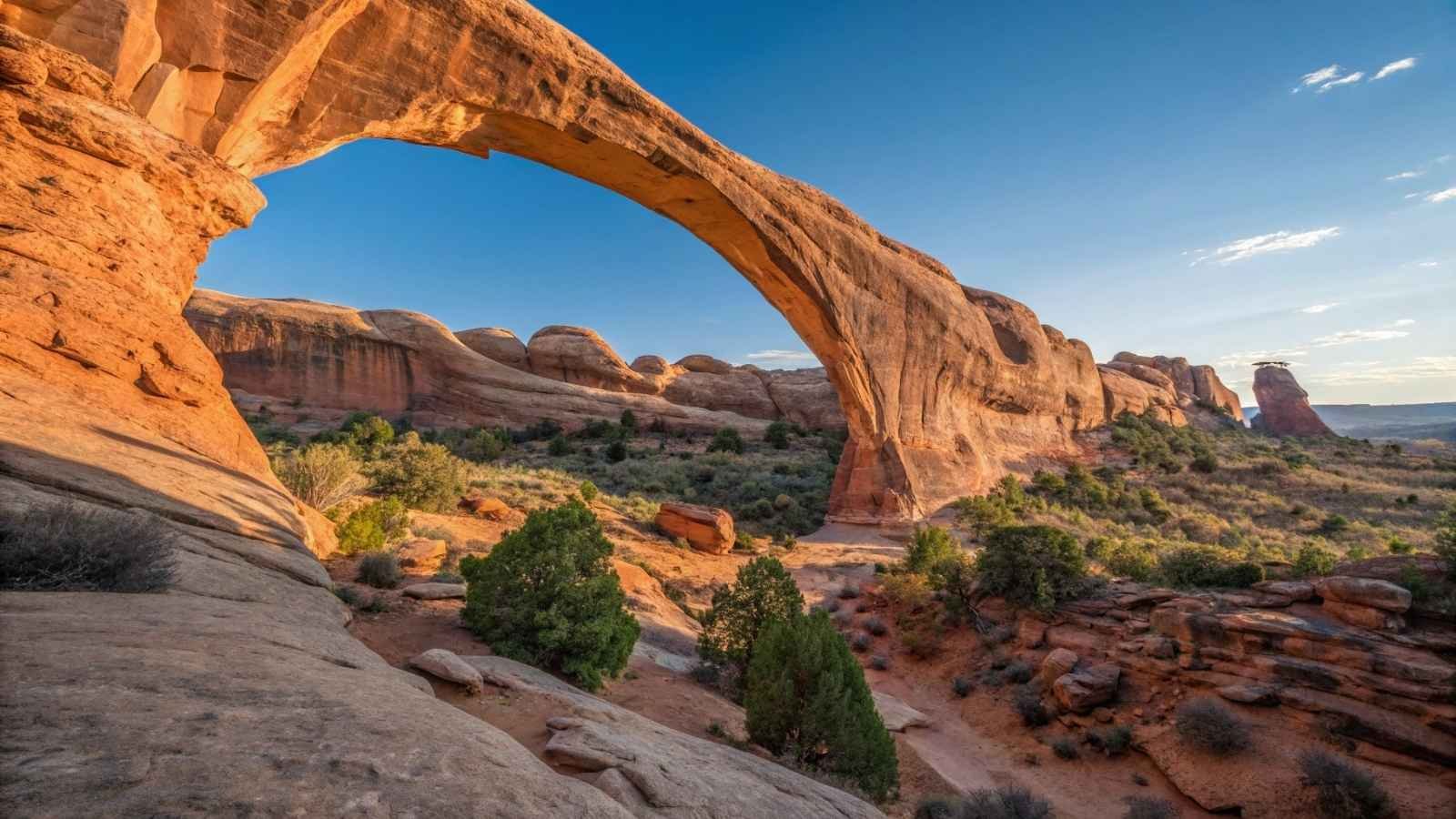
If you’ve never wandered through a landscape that feels like a Martian sculpture garden, Devil’s Garden in Arches National Park is about to become your favorite shoulder-season escape. While this hike can be oppressively hot in summer, late October into early December brings cooler temps and empty trails—perfect for slow exploration and wide-angle photos without tour groups in the background.
The full 7.9-mile loop is a greatest-hits reel of natural arches: Landscape Arch (the longest in North America), Double O Arch, and dozens more. Scrambling over slickrock and navigating primitive trail sections adds a dash of adventure that keeps even seasoned hikers grinning.
And let’s be honest: there’s something deeply peaceful about being in this red rock playground under a golden late-afternoon sun, with just your footfall and the desert breeze for company. In fall, Moab’s room rates drop, and park entry lines shrink—but the scenery only gets better.
Need-to-Know:
- Best Months to Visit: Late October to early December
- Trail Length: 7.9-mile loop
- Difficulty: Moderate with rock scrambling
- Permit Required: No
- Nearby Base: Moab – fall travel deals and cooler weather make it prime time
8. Lost Mine Trail – Big Bend National Park (Early Spring)

Tucked away in the remote Chisos Mountains, the Lost Mine Trail is one of Big Bend’s most rewarding short hikes—and a shoulder-season favorite for good reason. In early spring (March to April), desert blooms start popping, temperatures are just right, and the panoramic views of Casa Grande, Juniper Canyon, and Sierra del Carmen are simply unforgettable.
This trail climbs steadily through piñon-juniper woodland into high desert ridgelines, with frequent switchbacks offering postcard-worthy overlooks. It’s only about 5 miles round trip, but every foot feels like you’re peeling back layers of West Texas beauty.
What’s more, Big Bend is one of the least-visited national parks, so even in peak seasons it never feels overrun. But in early spring, it hits that magic sweet spot: perfect weather, blooming cactus, and quiet trails, with local lodges and campgrounds still offering decent availability and pricing.
Need-to-Know:
- Best Months to Visit: March to April
- Trail Length: 4.8 miles round trip
- Difficulty: Moderate
- Permit Required: No
- Nearby Base: Chisos Basin or Terlingua – spring is prime time before the heat sets in






